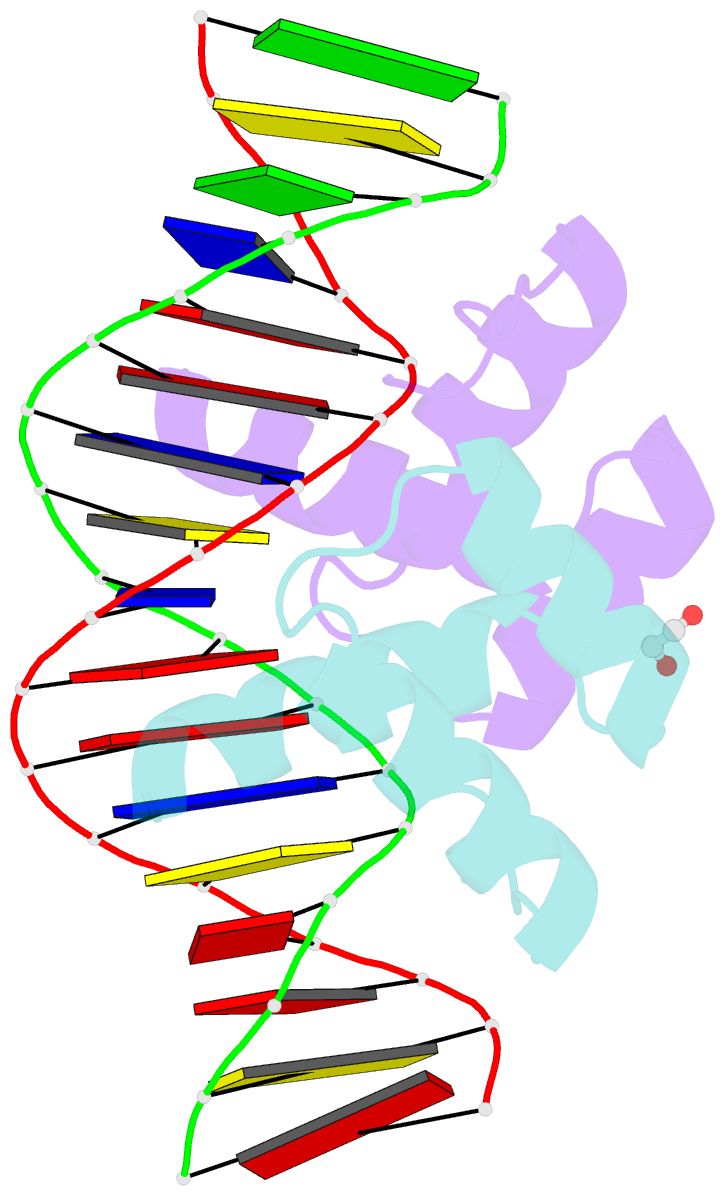Summary information and primary citation
- PDB-id
- 8ejo; SNAP-derived features in text and JSON formats;
DNAproDB
- Class
- DNA binding protein-DNA
- Method
- X-ray (2.67 Å)
- Summary
- Crystal structure of the homeodomain of platypus sdux in complex with DNA
- Reference
- Bosnakovski D, Toso EA, Ener ET, Gearhart MD, Yin L, Luttmann FF, Magli A, Shi K, Kim J, Aihara H, Kyba M (2023): "Antagonism among DUX family members evolved from an ancestral toxic single homeodomain protein." Iscience, 26, 107823. doi: 10.1016/j.isci.2023.107823.
- Abstract
- Double homeobox (DUX) genes are unique to eutherian mammals, expressed transiently during zygotic genome activation (ZGA) and involved in facioscapulohumeral muscular dystrophy (FSHD) and cancer when misexpressed. We evaluate the 3 human DUX genes and the ancestral single homeobox gene sDUX from the non-eutherian mammal, platypus, and find that DUX4 cytotoxicity is not shared with DUXA or DUXB, but surprisingly is shared with platypus sDUX, which binds DNA as a homodimer and activates numerous ZGA genes and long terminal repeat (LTR) elements. DUXA, although transcriptionally inactive, has DNA binding overlap with DUX4, and DUXA-VP64 activates DUX4 targets and is cytotoxic. DUXA competition antagonizes the activity of DUX4 on its target genes, including in FSHD patient cells. Since DUXA is a DUX4 target gene, this competition potentiates feedback inhibition, constraining the window of DUX4 activity. The DUX gene family therefore comprises antagonistic members of opposing function, with implications for their roles in ZGA, FSHD, and cancer.





